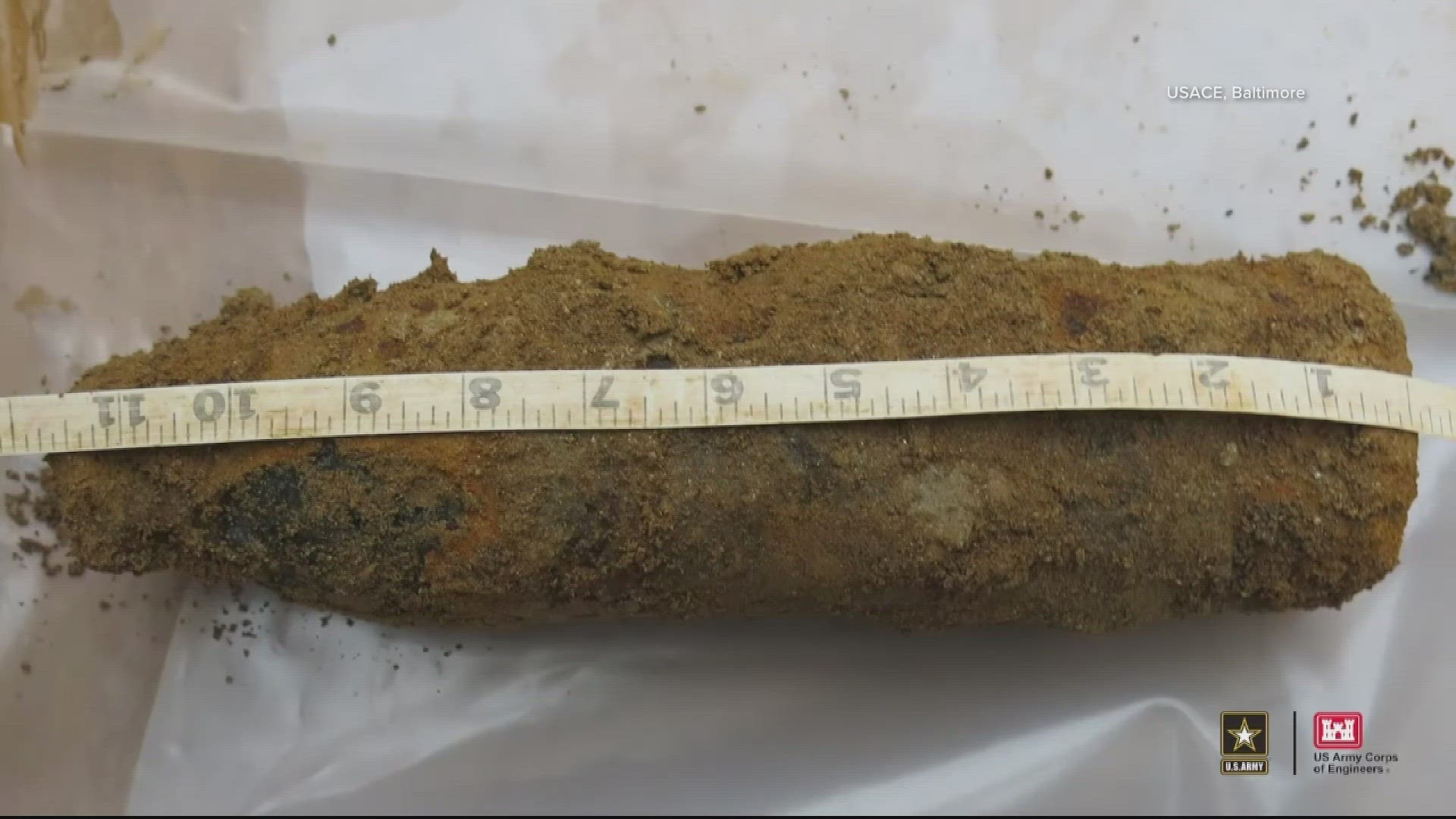WASHINGTON — People who live around Fort Totten Park said they weren’t surprised when someone found more mystery items buried beneath the soil there Tuesday afternoon.
The National Park Service (NPS) closed part of the park after one of its employees found two metal canisters in a mound of soil. NPS subsequently urged locals to stay away from cordoned off part of the park east of Fort Totten Drive, south of Gallatin Street, and north of Brookland Avenue NE.
Metro trains even bypassed the nearby Fort Totten station, for more than an hour, as federal authorities conducted their investigation.
NPS said the canisters, which appeared to be pushed into the park from the road, will be analyzed by the United States Army at Marine Corps Base Quantico. The federal agency said the soil and the cannisters' origins are under investigation.
“Public safety is the NPS’s highest priority,” a NPS statement reads. “The NPS is working to determine the next steps to evaluate the area. We will provide updates as more information is available.”
This latest discovery comes after NPS found an empty, unfused World War I-era metal canister in Fort Totten Park in July 2020.
Its discovery prompted locals to push NPS to further examine the park for similar canisters and possible WWI-era munitions.
NPS said following its 2020 discovery, no other canisters were found around Fort Totten Trail where the first canister was discovered.
However, residents still had concerns.
Local Advisory Neighborhood Commissioner Zach Ammerman contacted Delegate Eleanor Holmes Norton about the issue. She, in turn, wrote a letter to National Park Service Director Charles Sams to investigate ordnances and soil and groundwater contamination throughout Fort Totten Park.
She specifically noted she was disappointed NPS only looked at parts of the park around Fort Totten Trail after she requested a “thorough investigation” following a meeting in 2020 with the service, the US Army Corps of Engineers and the Washington Metropolitan Area Transit Authority”
“I believe it is imperative that NPS conduct an investigation throughout Fort Totten Park,” she said. “This park is located in a residential neighborhood and is regularly used.”
Norton’s legislative team informed WUSA9 Wednesday that it has yet to receive an answer from NPS to the delegate’s request.
“We have yet to receive a response to this letter,” a statement reads. “In their press release, NPS says they are determining next steps to evaluate the area. I assume they mean only the area the canisters are found, instead of the whole park. We won’t know whether the Fort Totten canisters are related to Spring Valley until their investigation is complete.”
Ammerman believes the discoveries in Fort Totten Park are tied to weapons waste material, once found in DC’s Spring Valley neighborhood in Upper Northwest D.C., in 1993.
“I think we just need to do testing of the entire [Fort Totten Park] and quit pretending like there’s not an issue when there clearly is,” he said.
According to the US Corps of Army Engineers, Baltimore District [USACE], during World War I, the US government used the American University Experiment Station [AUES], in Spring Valley, to research and test chemical agents, equipment, and munitions. A remediation project at that site, located along the 4800 block of Glenbrook Road, concluded in August 2021 with the ultimate discovery of more than 550 munition items. Officials said 23 of them had been filled with chemical agents.
The National Park Service said the source of the empty canister found in Fort Totten Park has still not been determined. However, during a meeting in January 2021, Dan Noble, the USACE’s Spring Valley Project Manager, said it was possible the Fort Totten canister did originate in Upper Northwest.
“[D. Noble] explained that USACE inspected and obtained x-rays of the shell,” a meeting transcript reads. “The shell was found to be a 75mm with a hex plug. This type of munition was often found in Spring Valley. There is no absolute way to determine if the shell came from Spring Valley, but it is a possibility since the shell is a WWI munition. Spring Valley is on the list of places that the shell may have originated from.”
Ammerman said he wished the issues at Fort Totten were treated with the same urgency as they were in Spring Valley.
“Why can’t we get – I think I know why – just an iota of attention that was given to the other side of D.C. where the richest people in D.C. live, here?” he said.
Ammerman once again reiterated Fort Totten Park is a place locals use to walk or cut through to get to and from WMATA’s Fort Totten station.
He added, at this point, he is very concerned about the possible environmental impacts any canisters could have on the soil.
“That’s honestly what I’m more concerned about,” he said. “The stuff that may have seeped into the soil and I would like them to do testing for that.”
WUSA9 reached out to NPS to see if it has any plans to examine the entirety of Fort Totten Park for munitions, ordnances, or any other types of waste. It said it is working to determine the next steps to evaluate the area and no other additional information on the park is available at this time.
"Fort Totten Park is open for recreation, but visitors should stay on the Metropolitan Branch Trail and the grassy areas of the fort itself (near Fort Totten Dr. And Crittenden St. NE)," the NPS statement reads. "Visitors should not use unofficial trails through the woods."

